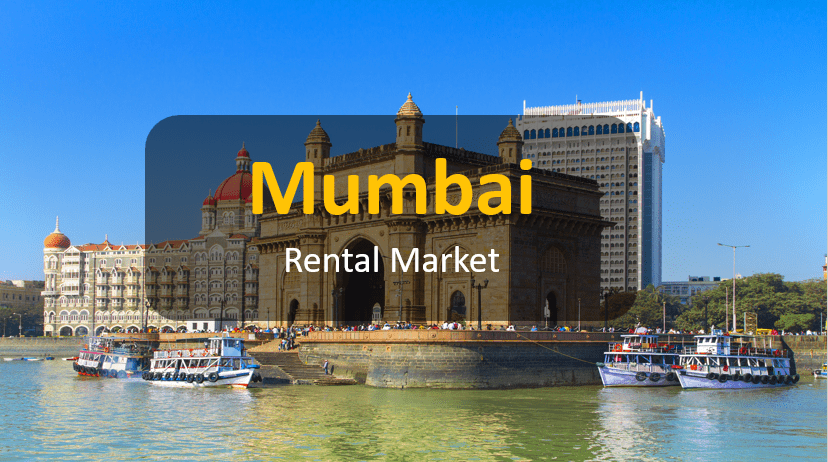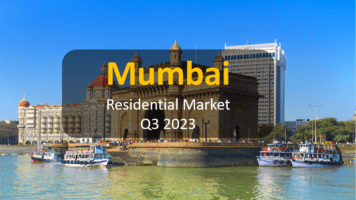Mumbai, recognised as India’s premier financial and commercial hub, serves as a key contributor to the nation’s economic prowess. It draws ambitious individuals from across the country, forming a diverse and dynamic population. With the city witnessing an increased influx and further expansion, the need for rental housing has surged accordingly. Renting remains a preferred housing option in the city due to its financial flexibility, mobility benefits, cost-effectiveness, and reduced responsibilities associated with property ownership.
Inclination Towards Renting
As a prime real estate destination, Mumbai offers a blend of luxury and opportunity. The city’s residential appeal extends from its distinguished neighbourhoods like Bandra and Andheri to emerging suburbs like Thane and Navi Mumbai, promising high returns and a lifestyle steeped in urban sophistication.
With the primary commercial activities gravitating towards key districts like Bandra-Kurla, Andheri, and Nariman Point within the city, these locations, predictably, command the highest property rates and rents in the country, reaching up to INR 100,000/sqft for purchase and over INR 150,000 per month for rentals.
Thus, given the formidable pricing and rental values in these preferred micro-markets, the demand for property ownership has extended to peripheral areas such as Thane, Kalyan-Dombivli, Vasai-Virar, Mira-Bhayandar, and Navi Mumbai. Consequently, the rise in housing demand in these locations has led to a noticeable uptick in property values ranging between INR 1-3 crores. This has prompted many relocating professionals to opt for rental accommodations, considering it a more financially viable option.
Another contributing factor unique to Mumbai is the increase in redevelopment projects following the pandemic. Residents often find themselves in need of rental housing for a few years during these projects' construction phases. For instance, the Maharashtra Housing and Area Development Authority (MHADA) approved 159 redevelopment projects between April 2021 and August 2022, a significant rise compared to the 76 projects sanctioned in the period from April 2019 to March 2020. This surge in demand has pushed rental prices upwards, experiencing robust double-digit growth compared to a more moderate annual increase of 7–8 per cent in property prices.
Popular Neighbourhoods in the City
Analysis of rental trends reveals a concentrated demand in areas like Andheri East, Andheri West, Powai, Thane West, and Airoli, due to their proximity to major commercial hubs and excellent connectivity.
Currently, median rents in the Mumbai Metropolitan Region (MMR) range from INR 60,000 to INR 65,000 per month. While the price-to-rent ratio in central Mumbai remains high at 47, it falls within the range of 25–30 in neighbouring areas like Thane and Navi Mumbai, comparable to ratios observed in southern cities like Bengaluru and Hyderabad.
Increasing Preference for Larger Homes
Of late, a noticeable shift in apartment preferences has been observed in Mumbai's rental market. Although 1 BHK and 2 BHK apartments continue to be the favoured options, there has been a notable increase in demand for 4 BHK and larger units since 2020. Several factors drive this trend, including hybrid work arrangements, increased disposable incomes leading to a preference for more personal space, and evolving lifestyles. This transformation has significant implications for the rental market, including heightened demand for larger apartments, potential for increased rental yields, and a shift in tenant demographics.
Conclusion
The post-pandemic rental market in Mumbai is thriving, fuelled by returning professionals seeking larger living spaces due to hybrid work setups. Despite lower global rental yields, rent increases in recent times offer investors promising returns. While the city centre continues to command the highest rents nationally, there is a perceptible move towards peripheral areas due to affordability concerns. Changing preferences for personal space, limited availability of ready-to-move homes, and high investment potential will largely contribute to the market's resilience. Going forward, Mumbai's status as a financial hub and mature residential market, coupled with its established infrastructure, economic stability and growing population, will continue to lead sustained demand in the rental housing sector.











